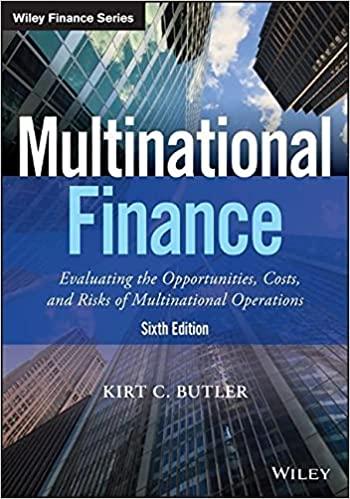





Jiminy's Cricket Farm issued a bond with 10 years to maturity and a semiannual coupon rate of 6 percent 2 years ago. The bond currently sells for 95 percent of its face value. The company's tax rate is 35 percent. a. What is the pretax cost of debt? (Do not round intermediate calculations. Enter your answer as a percent rounded to 2 decimal places, e.g., 32.16.) Pretax cost of debt % b. What is the aftertax cost of debt? (Do not round intermediate calculations. Enter your answer as a percent rounded to 2 decimal places, e.g., 32.16.) Aftertax cost of debt % c. Which is more relevant, the pretax or the aftertax cost of debt? O Aftertax cost of debt Pretax cost of debt Lannister Manufacturing has a target debt-equity ratio of .70. Its cost of equity is 14 percent, and its cost of debt is 7 percent. If the tax rate is 38 percent, what is the company's WACC? (Do not round intermediate calculations. Enter your answer as a percent rounded to 2 decimal places, e.g., 32.16.) WACC % You are given the following information for Watson Power Co. Assume the company's tax rate is 30 percent. Debt: 9,000 6.4 percent coupon bonds outstanding, $1,000 par value, 20 years to maturity, selling for 107 percent of par; the bonds make semiannual payments. Common stock: 360,000 shares outstanding, selling for $54 per share; the beta is 1.10. Preferred stock: 14,000 shares of 4 percent preferred stock outstanding, currently selling for $74 per share. Market: 11 percent market risk premium and 4.4 percent risk-free rate. What is the company's WACC? (Do not round intermediate calculations. Enter your answer as a percent rounded to 2 decimal places, e.g., 32.16.) WACC % Titan Mining Corporation has 9.8 million shares of common stock outstanding, 420,000 shares of 5 percent preferred stock outstanding, and 220,000 8.6 percent semiannual bonds outstanding, par value $1,000 each. The common stock currently sells for $46 per share and has a beta of 1.40, the preferred stock currently sells for $96 per share, and the bonds have 15 years to maturity and sell for 117 percent of par. The market risk premium is 8.6 percent, T-bills are yielding 4 percent, and the company's tax rate is 40 percent. a. What is the firm's market value capital structure? (Do not round intermediate calculations. Round your answers to 4 decimal places, e.g., 32.1616.) Market value weight Debt Preferred stock Equity b. If the company is evaluating a new investment project that has the same risk as the firm's typical project, what rate should the firm use to discount the project's cash flows? (Do not round intermediate calculations. Enter your answer as a percent rounded to 2 decimal places, e.g., 32.16.) Discount rate % Suppose your company needs $20 million to build a new assembly line. Your target debt-equity ratio is . 8. The flotation cost for new equity is 9 percent, but the flotation cost for debt is only 6 percent. Your boss has decided to fund the project by borrowing money because the flotation costs are lower and the needed funds are relatively small. a. What is your company's weighted average flotation cost, assuming all equity is raised externally? (Do not round intermediate calculations. Enter your answer as a percent rounded to 2 decimal places, e.g., 32.16.) Flotation cost % b. What is the true cost of building the new assembly line after taking flotation costs into account? (Enter your answer in dollars, not millions of dollars, e.g. 1,234,567. Do not round intermediate calculations and round your answer to the nearest whole dollar amount, e.g., 32.) Amount raised $ Epley Industries stock has a beta of 1.20. The company just paid a dividend of $.50, and the dividends are expected to grow at 6 percent. The expected return on the market is 11 percent, and Treasury bills are yielding 5.2 percent. The most recent stock price for the company is $69. a. Calculate the cost of equity using the DCF method. (Do not round intermediate calculations. Enter your answer as a percent rounded to 2 decimal places, e.g., 32.16.) DCF method % b. Calculate the cost of equity using the SML method. (Do not round intermediate calculations. Enter your answer as a percent rounded to 2 decimal places, e.g., 32.16.) SML method %












